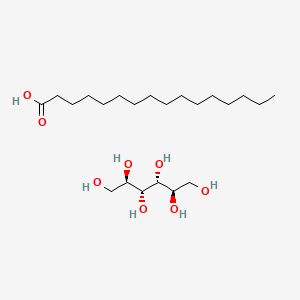|
Name: methenolone (1-methyl-17-beta-hydroxy-5-alpha-androst-1-en-3-one)
Type: Androgenic steroid
AKA: Primobolan, Primobolan Depot, Primobolan S

|
|
II. Natural Derivative
Synthetic substance, no natural derivative
 |
|
III. Chemical Profile (IUPAC name)

|
|
IV. History
Methenolone, also known as Primobolan, was developed in the 1960s as an anabolic steroid for muscle growth and performance enhancement. Its use became popular in bodybuilding and athletics. Methenolone's regulatory status reflects ongoing concerns about anabolic steroid abuse and its impact on health and performance.

|
|
V. Legal Information
Methenolone, an anabolic steroid, is illegal in the US for non-medical use and classified under the Anabolic Steroid Control Act. It is similarly restricted in many countries due to its potential for abuse in sports and bodybuilding. Organizations like WADA ban its use in athletics. Efforts to regulate anabolic steroids focus on preventing abuse and ensuring public health safety.
US Federal Schedule - III
Schedule III drugs, substances, or chemicals are defined as drugs with a moderate to low potential for physical and psychological dependence. Schedule III drugs abuse potential is less than Schedule I and Schedule II drugs but more than Schedule IV. Some examples of Schedule III drugs are: products containing less than 90 milligrams of codeine per dosage unit (Tylenol with codeine), ketamine, anabolic steroids, testosterone.
Key US Federal Policies:
Controlled Substances Act. Public Law: Public Law 91-513 (text can be found on GovInfo) (https://www.dea.gov/drug-information/csa). Date enacted: October 27, 1970.
|
|
VI. Physical Effects
Methenolone, an anabolic steroid, was developed in the 1960s for muscle enhancement. It acts as an upper, promoting muscle growth with fewer androgenic effects than other steroids. Physical impacts include increased muscle mass and strength, but also elevated heart rate and potential liver damage. Short-term use can enhance physical performance, while long-term use may lead to hormonal imbalances and cardiovascular issues. Overdose risks include liver toxicity and cardiovascular problems. Safe use involves careful dosing and monitoring. Recent research examines its effectiveness and health risks compared to other steroids.  |
|
VII. Psychological Effects
N/A
 |
|
VIII. Culture
Methenolone is an anabolic steroid used for muscle building and performance enhancement. It has no historical lore but became significant in bodybuilding and sports in the late 20th century. Cultural discussions focus on its benefits versus health risks and ethical concerns. Proponents highlight its role in muscle growth, while opponents warn of potential side effects and impact on sports fairness.
 |
